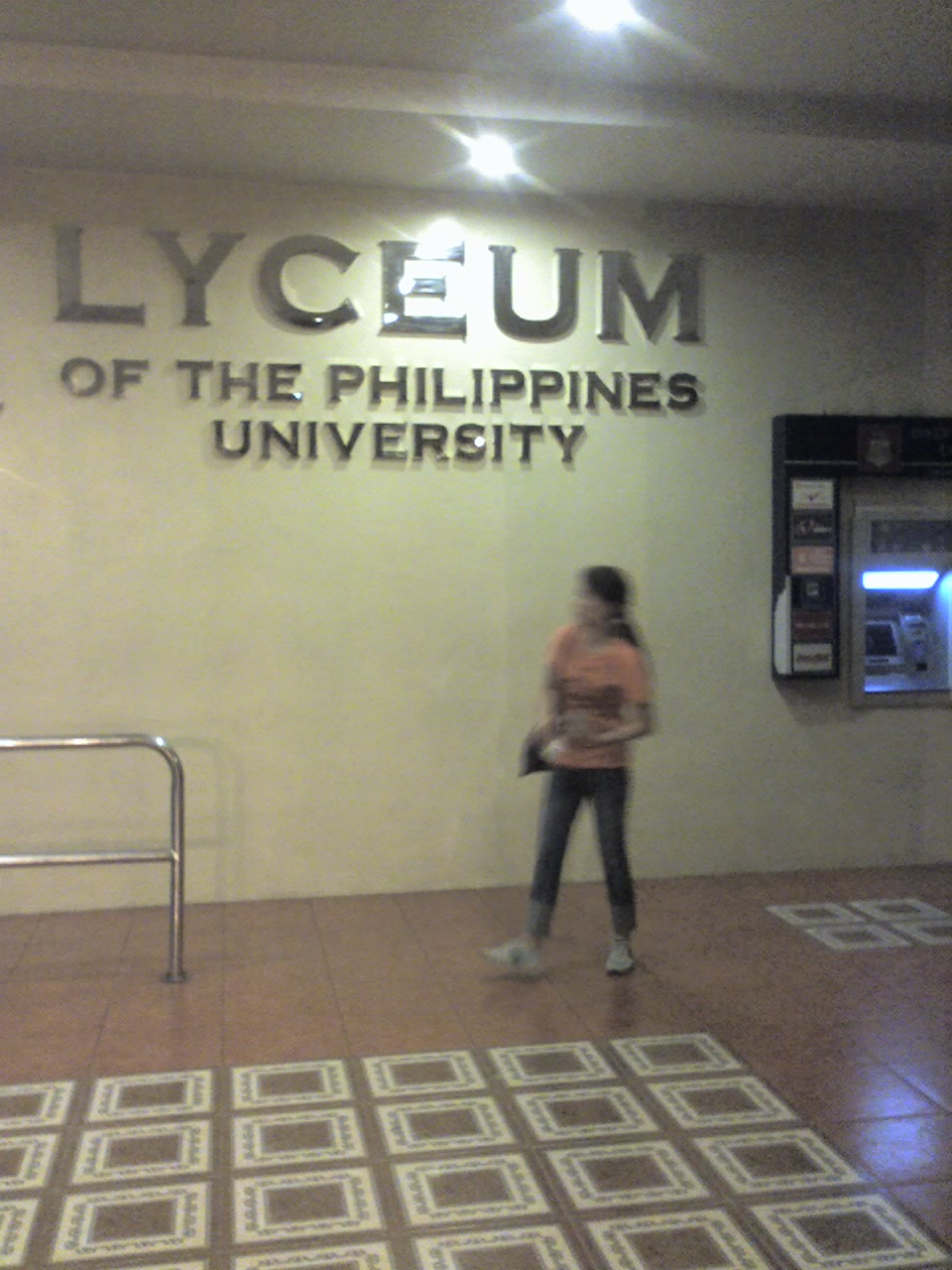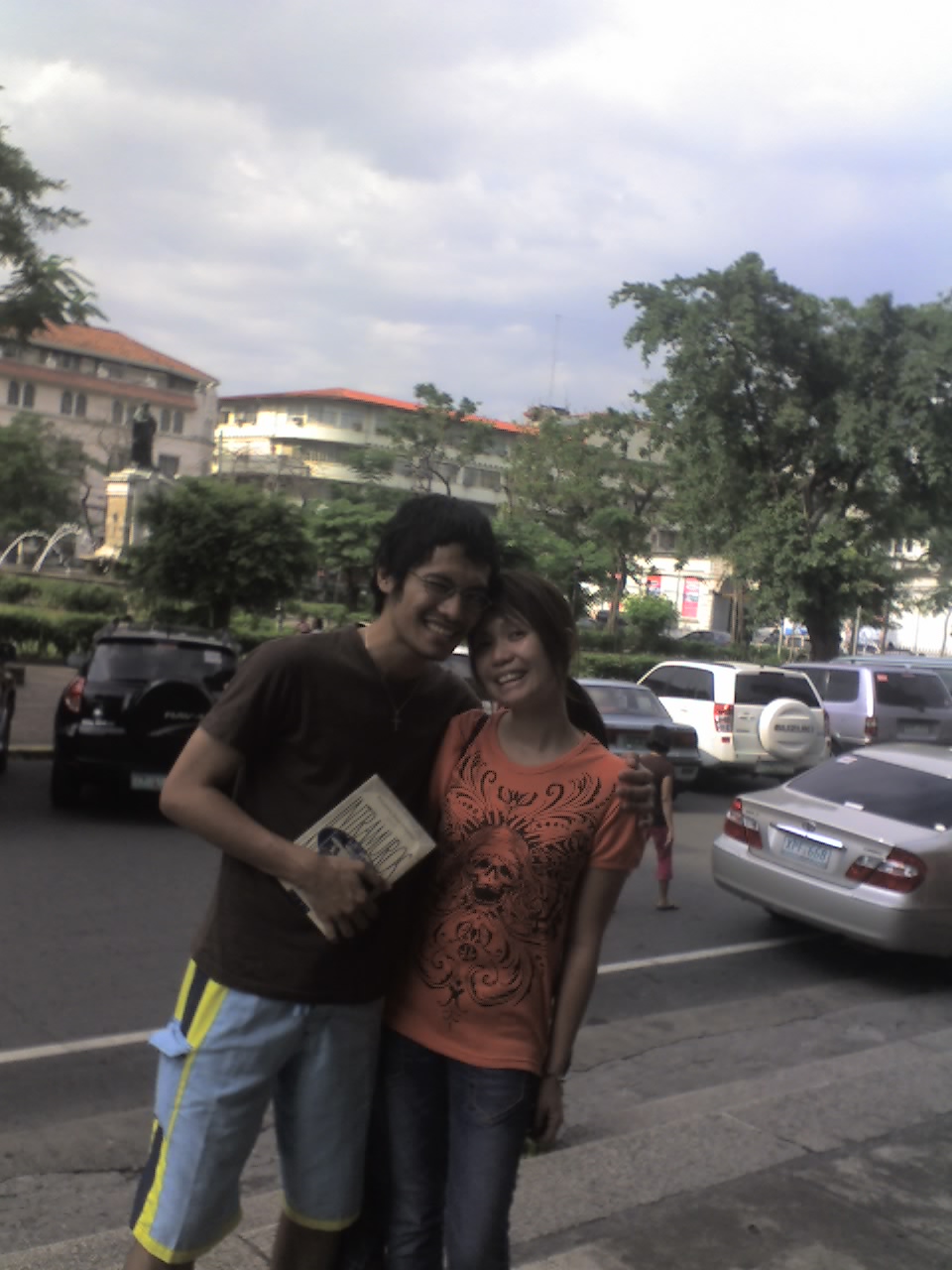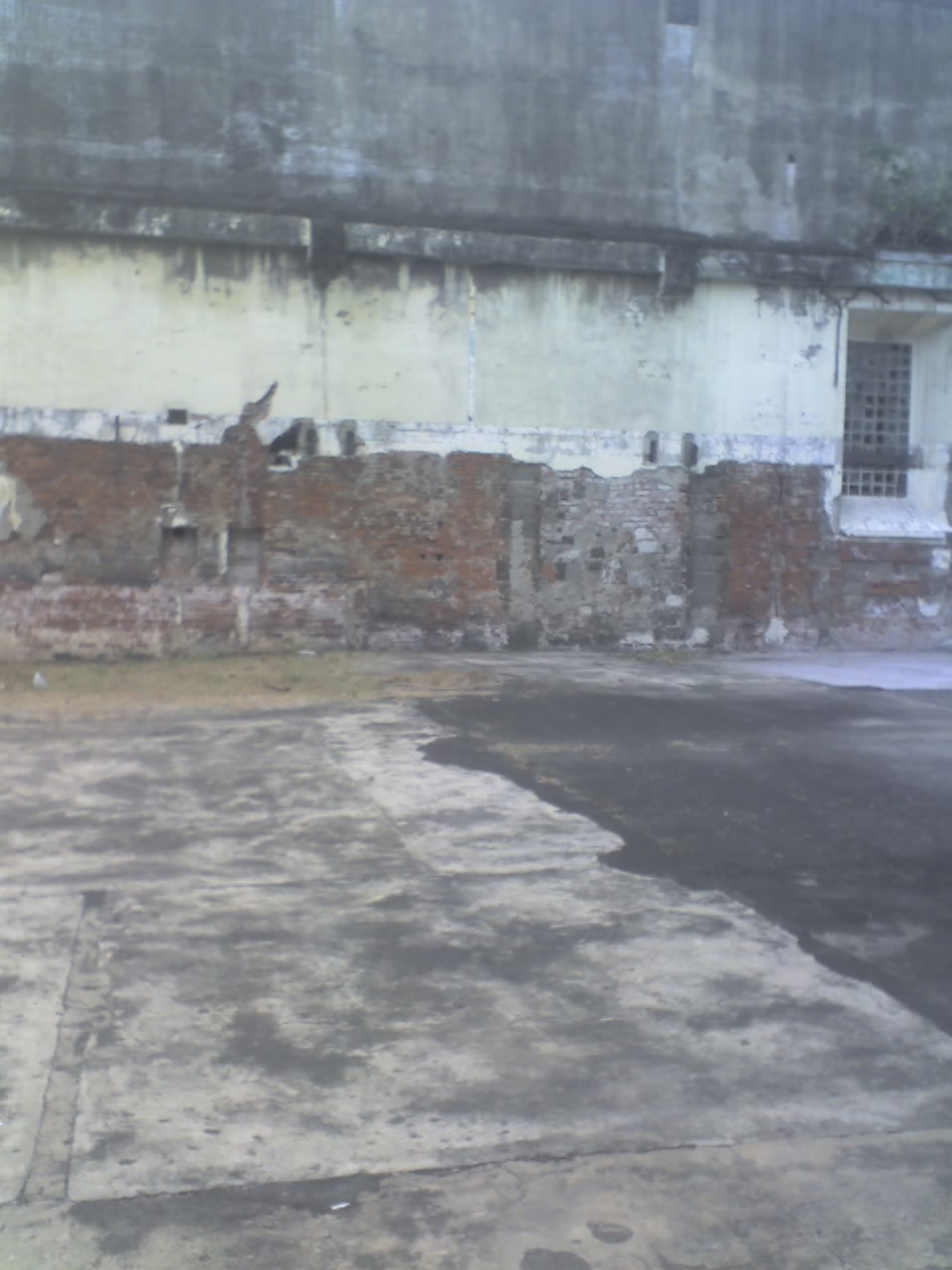“In October, a breath of the north stirs Manila, blowing summer’s dust and doves from the tile roofs, freshening the moss of old walls, as the city festoons itself with arches and paper lanterns for its great votive feast to the Virgin. Women hurrying into their finery upstairs, bewhiskered men tapping impatient canes downstairs, children teeming in the doorways, coachmen holding eager ponies in the gay streets, glance up anxiously, fearing the wind’s chill: would it rain this year? (But the eyes that, long ago, had gazed up anxiously, invoking the Virgin, had feared a grimmer rain—of fire and metal; for pirate craft crowded the horizon.) The bells begin to peal again and sound like silver coins showering in the fine air; at the rumor of drums and trumpets as bands march smartly down the cobblestones, a pang of childhood happiness smites every heart. October in Manila! But the emotion, so special to one’s childhood, seems no longer purely one’s own; seems to have traveled ahead, deep into time, since one first felt its pang; growing ever more poignant, more complex—a child’s rhyme swelling epical; a clan treasure one bequeaths at the very moment of inheritance, having added one’s gem to it. And time creates unexpected destinations, history raises figs from thistles: yesterday’s pirates become today’s roast pork and paper lanterns, a tapping of impatient canes, a clamor of trumpets…” –NICK JOAQUÍN, (Guardia de Honor)–

¡Manila de mis amores!
I’ve been wanting to do this for a long, long time. Ever since I rejoined the Catholic Church last 2003, I’ve been longing to do a visita iglesia within the historic walls of Intramuros, “the original Manila”. Seven were the original churches of the Walled City. But only two are left (and one still lay in ruins). Finally, I had the chance to fulfill that dream a few days ago, October 28. The weather was absitively, posolutely perfect: very windy, very cool, very October, much like the days of Imperial Spain in the Philippines. And what better way of fulfilling that dream trip than tagging along my partner for life, Yeyette Perey de Alas.
We were like historical researchers. As a guide, we brought along with us a copy of the Philippine Daily Inquirer’s highly informative Intramuros (published in 1988), edited by the late great National Artist for Literature, Nick Joaquín.
Nick was a true-blooded Manileño born and bred. He had witnessed so much about the final living years of Spanish Intramuros. Most of Nick’s works are a fine testament of how the Filipinos, particularly the Manileños within and without the Walled City, lived and breathed their every day Intramuros lives. And if I only had my way, I will revive everything that used to be in the original capital city. Because that’s simply the way it should be. Period. No amount of restoration will bring back Intramuros’ old glory as long as squatters are allowed to live within the Walled City, as long as Dick Gordon’s shameful and hispanophobic Light and Sound Museum continues to exist, and as long as the five of the original seven churches aren’t brought back by the Intramuros Administration, the local Catholic Church, and the Philippine Government in general. In the words of Nick, “Intramuros was a collective high altar formed by its churches.”

“And from childhood no amount of familiarity could dull for me the mysterious wondrousness of Intramuros as the very vitals, the hid heart, the secret soul of my city. Every going into it was a penetration — and in there, for a Manileño, it was always like coming home. He was back to his original, essential, eternal island. He was back to roots. Sa loob ng Maynila.” –NICK JOAQUÍN–

Puerta del Parián


Lyceum of the Philippines

José P. Laurel, the founder of Lyceum of the Philippines and the third president of the Philippines.


The only ATM we found in Intramuros.


Revolucionario-turned-traffic enforcer.


The playground of the Mapúa Cardinals.


Did you know that Tomás Mapúa y Bautista was the very first registered Filipino architect?



Manila High School

Colegio de Santa Rosa (1750), one of the two remaining original schools (the other one's Colegio de San Juan de Letrán) in Intramuros.

A view of Colegio de Santa Rosa along Calle Beaterio which leads to the Manila Cathedral (the domed cathedral is visible from here).


Commemorative plaques of the Santo Domingo Church and University of Santo Tomás (Plaza de Santo Tomás).

Monument of Archbishop Miguel de Benavides, O.P., founder of the University of Santo Tomás.


The original Universidad de Santo Tomás used to stand here.


Did you know that our country is the only one that was named after a Spanish monarch? Yep, Las Islas Felipenas was named after King Philip II.

THis statue was erected in honor of King Philip II, King of Spain, from whom these islands were named after him.

The Aduana was the original Customs House.

The Roman Catholic Archdiocese of Manila



Siesta beside the site where the Ateneo Municipal used to stand.


Calle Real esquina Calle Santa Lucía. Behind the massive walls is the San Agustín Church and Convent.

Puerta de Santa Lucía

Captured!

Calle Santa Potenciana is the oldest street in Intramuros. This is at the rear wall of San Agustín Church. Notice the original ancient engraved name of the street above the modern tiled lettering. My precious!!!

The building of the National Commission for Culture and the Arts.

Ironically, the National Commission for Culture and the Arts is in front of something uncultured and unaesthetic -- a slum area, the bane of contemporary Intramuros. And it has been like this for several years already.

Here once stood the Cuartel de España (fronting the Lourdes Church and Convent). This is where the popular sport of basketball was first introduced to Filipinos by the Americans.


Calle Anda, named after the great Governor-General Simón de Anda who refused to surrender to the British forces who invaded our country in 1762. Instead, he waged a guerrilla warfare against them. Without a shadow of a doubt, de Anda is one of the greatest Filipino leaders of all time.

The bronze statue of King Carlos IV in Plaza Roma was installed in 1824 as a tribute to him for bringing into the country the first smallpox vaccine. The vaccine saved countless lives. Smallpox was then a deadly disease.

The four corners of Plaza Roma used to have balete trees. I'm not really sure if this balete tree --the only one in Plaza Roma today-- is one of them.

Colegio de San Juan de Letrán (Calle Beaterio side).

Colegio de San Juan de Letrán was once an orphanage.

The Walled City's Manila Cathedral is the mother of all Catholic churches in the Philippines.
***********************************
Seven were the churches of Intramuros. Let’s re-enact the itinerary. Entering through Victoria Gate and going up Solana, you reached San Francisco, which was a double church, for beside the main one (its creamy pillared façade rose five stories high) was the V.O.T., the chapel of the Franciscan third order, where was venerated a crowned St. Louis robed in ermine.
1. CHAPEL OF THE FRANCISCAN VENERABLE THIRD ORDER & THE SAN FRANCISCO CHURCH AND CONVENT

Chapel of the Franciscan Venerable Third Order. The site is now occupied by the Mapúa Institute of Technology.


St. Rita's Chapel (inside the Mapúa Institute of Technology campus) now stands on the very site where the Chapel of the Franciscan Venerable Third Order used to be.


San Francisco Church and Convent

*********************
At the end of Solana was Santo Domingo, magnificently gothic and rose-colored, with a side portal opening out to the Plaza de Santo Tomás.
2. SANTO DOMINGO CHURCH AND CONVENT

Santo Domingo Church and Convent

The neo-Gothic architecture of this legendary church thrilled my wife so much!

The Bank of the Philippine Islands now occupies the former site of Santo Domingo Church. The church is now in Quezon City.
*********************
Crossing this plaza and passing the university, you came upon the Cathedral, which had wide porches instead of a patio, iron-grille balustrades and, just inside the entrance, a small bronze statue of a seated St. Peter whose toes had been worn smooth by the kisses of the faithful.
3. MINOR BASILICA OF THE IMMACULATE CONCEPTION (THE ROMAN CATHOLIC CATHEDRAL OF MANILA)

The Manila Cathedral is actually a Roman Catholic Minor Basilica, the cathedral of the Archdiocese of Manila. The throne of the Archbishop of Manila is inside this centuries-old holy edifice.

The Roman Catholic Cathedral of Manila



The historical marker behind me was one part of the Manila Cathedral which survived heavy bombing during World War II.

My wife poses at the steps of the Manila Cathedral. The Palacio del Gobernador is at the background. It used to be the Governor-General's residence.

Plaza Roma is at the background (in front of Manila Cathedral).

Manila Cathedral


*********************
Past the Cathedral, a left turn at Calle Arzobispo brought you to San Ignacio, wedged between the Ateneo and the episcopal palace; very high iron grilling enclosing the narrow court that formed a portico to this red-brick church, also known as Jesuitas.
4. SAN IGNACIO CHURCH

San Ignacio Church

Could you just imagine that a multitude of faithful Manileños used to pray here?

This red-brick church is also known as Jesuitas.


This church can still be revived.

San Ignacio Church


My wife is so thrilled to have touched more than a hundred years of historical bricks.


I climbed up the spiked iron gates just to get inside the ruins. And what do I see? An excavation instead of renovation.


Details of a double-column attached to the exterior walls of La Iglesia de San Ignacio.

The letters IA stand for Intramuros Administration, not Inutile Administration, LOL!
*********************
At the end of Arzobispo was San Agustín, with its double convent: the main monastery beside the church and the separate business quarters (or procuration) adjoining the Ateneo.
5. SAN AGUSTÍN CHURCH AND CONVENT

San Agustín Church and Convent

The moss-covered walls of the San Agustín Monastery along Calle Real.

The green moss covering the monastery walls of San Agustín.



San Agustín Church and Convent

The cobbled street of Calle Real del Palacio (now Calle General Antonio Luna). To the right is the Church of San Agustín.

San Agustín Church is the first church in the Philippines. It was also the last church standing in Intramuros after World War II.

San Agustín Church is a World Heritage Site -- BE PROUD OF IT!!!

One of the beloved stone lions of San Agustín Church.

The old monastery is on the left side of the church. Inside is the San Agustín Museum. Fr. Pedro Galende, O.S.A., is the curator.

Simply majestic...

The church's intricately designed domed ceiling. Still intact for centuries.

The church's stylish pulpit. It's no longer used due to its fragility and age.

The funny looking upside-down pineapple underneath the pulpit.

There’s a light at the end of every tunnel, err, corridor, hehehe! This leads to the museum and convent/monastery.

Capilla de la Asunción

Tomb of Jacobo Zóbel y Zangróniz in the Chapel of the Assumption (Capilla de la Asunción). He was a former mayor of Manila, polyglot, scholar, renowned numismatist, pharmacist, construction magnate, businessman... whew! This guy's the man!

Did you know that the lower part of this wooden entrance was cut down by the crazed Japanese Imperial Army to accomodate their machine guns? But by the time this photo was taken, it accomodated only the Irrepressible Brother Pepe, LOL!!!

At the right side of the church (Calle Real del Palacio).
*********************
Going down Calle General Luna and turning left at Calle Escuela, you found yourself at the Recollects’ Iglesia de San Nicolás, least visible of the Intramuros shrines, and with a cobbled patio in front and along one side.
6. SAN NICOLÁS DE TOLENTIONO CHURCH AND CONVENT

The Church and Convent of the Recollects


Manila Bulletin now stands on the ground where the San Nicolás de Tolentino Church and Convent once reigned supreme.
*********************
Turning right on Recoletos and doubling back on General Luna, you reached Lourdes Church, or Capuchinos, youngest of the Walled City’s temples. with a painting of the Virgin on its façade.
7. LOURDES CHURCH AND CONVENT

Silahis Arts and Crafts and the Ilustrado Restaurant now occupies the former site of the Lourdes Church and Convent.

Lourdes Church and Convent

*********************
“What alone survives of the old churches, San Agustín, looks extremely lonely without the busy company it had enjoyed for ages sa loob ng Maynila. And San Agustín has practically given up the public celebration of its old fiestas. St. Rita is no longer borne in procession on a float of Maytime roses; and the Virgin of Consolation no longer rides her silver carroza through the streets of Intramuros on the second Sunday of September — a cult commemorated in Fernando Zóbel’s Carroza. To repeat, Intramuros was the conjunto, of all its traditional temples; without its other colleagues, even the Cathedral and San Agustín are merely crown jewels without a crown. “Maybe a revival of piety (using the term in its Latin sense) will in the future inspire the return to Intramuros of all its former churches, chapels, convents and beaterios. Only then will Intramuros be really “restored” — when again it has a San Francisco with its Tuesdays of St. Anthony; a Santa Clara with its unseen choir of vestals; a Lourdes with its Saturday girl crowds; a Santa Isabel with its shrine of the Santo Cristo; a Recoletos with its Friday pilgrims and December feria de Santa Lucía; a San Ignacio with its fashionable confessionals; an Ateneo and a Santo Tomás back on original ground; a Santa Catalina and Beaterio and Santa Rosa come home again; a San Agustín resuming its public ceremonials; a Cathedral restoring the votive function of St. Andrew the Apostle as patron of the Noble and Ever Loyal; and a Santo Domingo again celebrating La Naval de Manila in old Manila. “Only then will Manileños again have a high altar round which they can gather as a coherent community — sa loob ng Maynila.” —NICK JOAQUÍN—
Spread this to all mankind!
















































































































